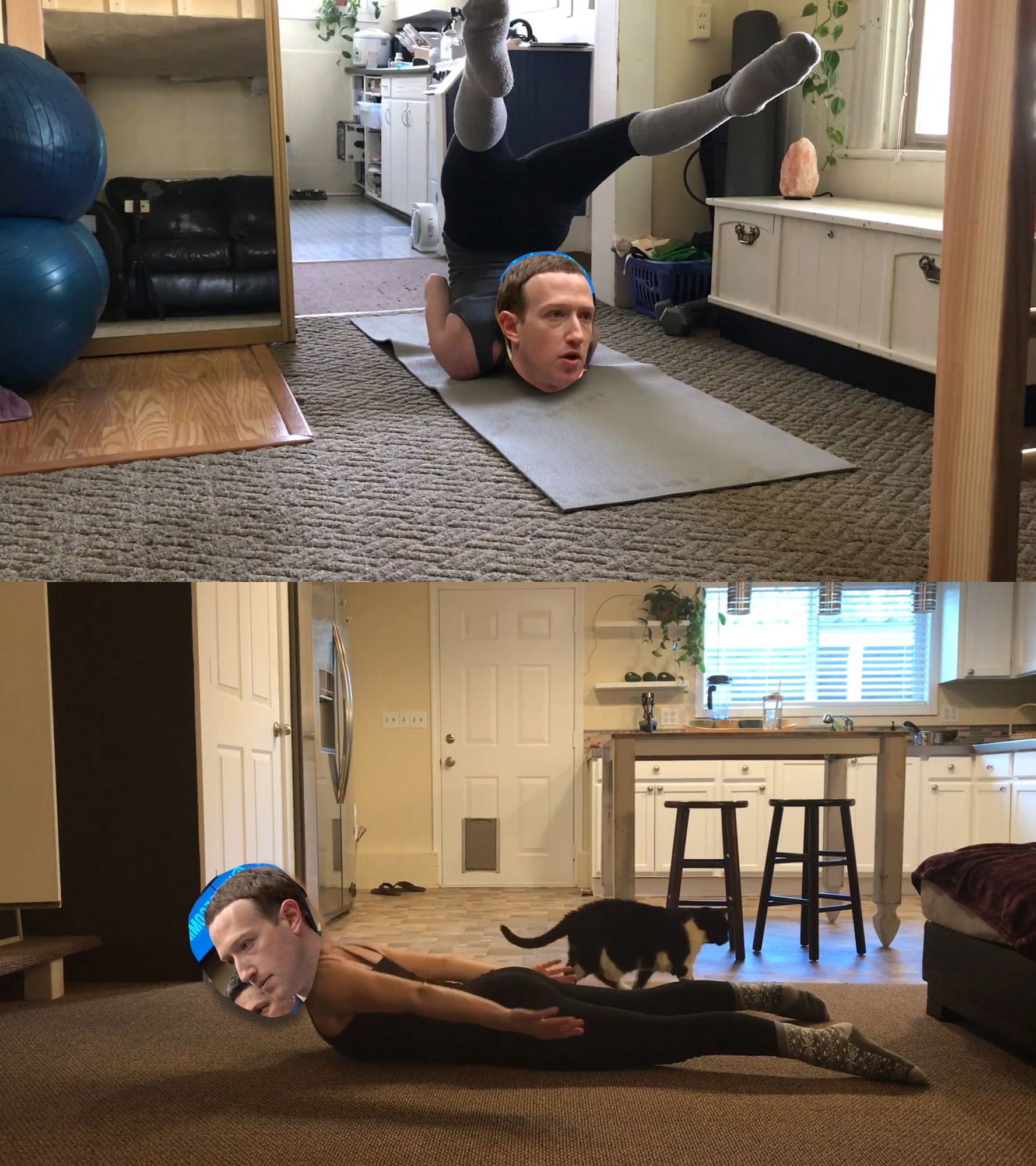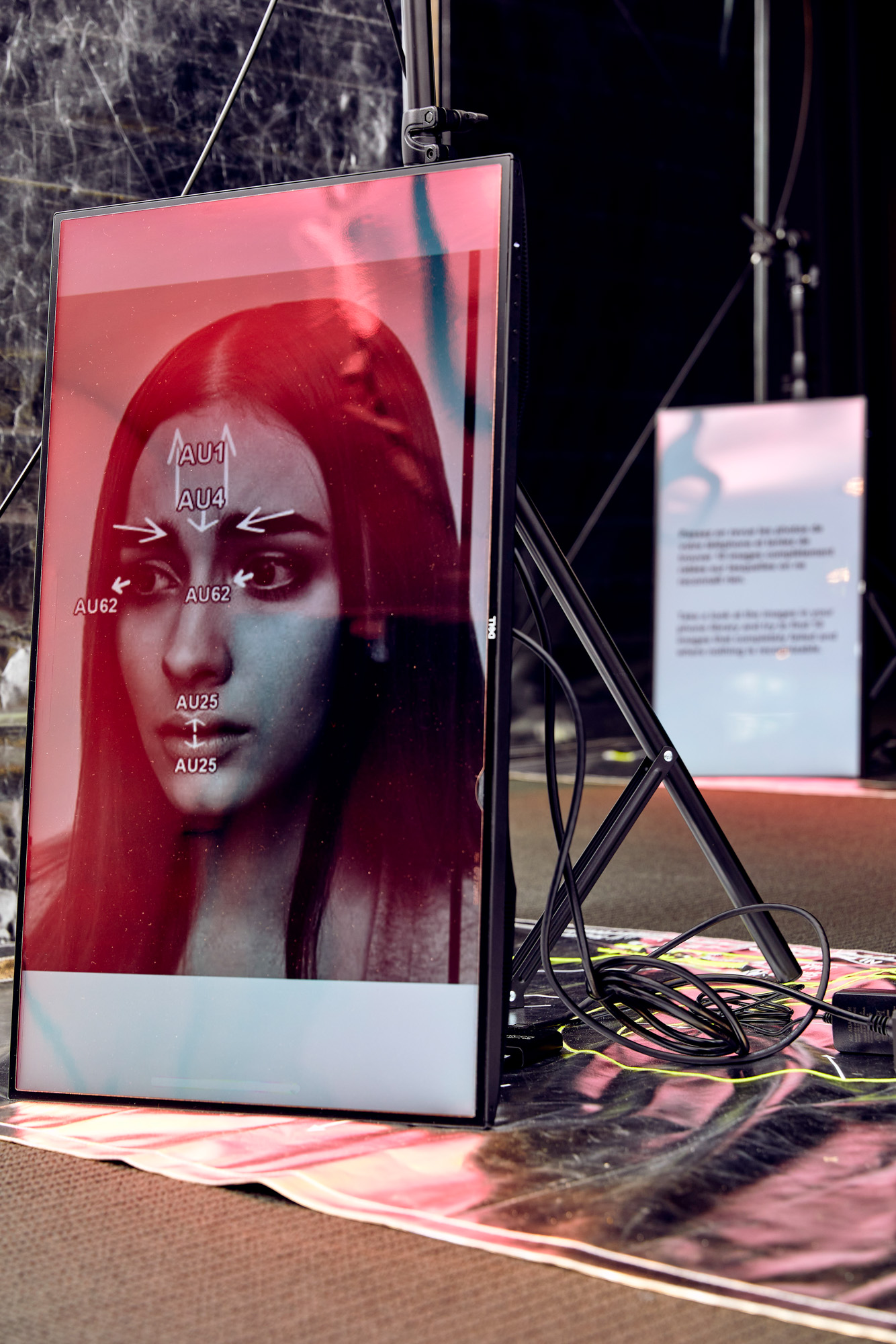Shows
The Dystopia of Digital Banality in “Don’t Be Evil”


“Don’t be Evil,” the final instalment of the “Conflict in My Outlook” series, succeeded a digital show launched in 2020, titled “We Met Online.” Curated by Anna Briers, the series’ dual format manifested its exploration of the internet’s social ramifications and the entanglement of online and offline worlds and selves. For a formidable exhibition with an expansive concept, it offered a decidedly focused narrative of human subjugation to corporate algorithms, through the interwoven themes of user, worker, and machine. Hours of multimedia content required several visits and rewarded patient observation and digestion, encouraging visitors to resist the swipe reflex and spend time with each work.
Visitors first experienced Cloud Copy (2020) by Xanthe Dobbie, an artist known for intricate digital collages, on an Oculus VR headset. The work stitches together fragments of internet content, engulfing the viewer in a claustrophobic world of corporate logos and pornography before ending with an explosion and the words “GAME OVER.” In employing purposefully banal aesthetics that mimic everyday software, Dobbie portrays the internet and its cloud of data as an all-encompassing quotidian dystopia, where “we are free to be our worst selves,” and set the tone for the rest of the show.

Installed in a dark room, Angela Tiatia’s Narcissus (2019) references the rich contrasts and staging of Caravaggio’s homonymous painting with its lush cinematic quality, spinning a critique on the seduction of the interface. Presented in extreme slow motion, the video depicts a group of people jostling for space, enamoured by a reflective pool, into which they fall, dive, and disappear, mirroring social-media users’ inevitable, often combative, pursuit for attention. Narcissus led to a gallery featuring artists who are prominent as performers, such as Matthew Griffin, whose humorous The outernet (2018) video presents the artist as a talking head edited onto television news footage. As Griffin monologues about blockchain and politics, everyone else onscreen remains completely silent, evoking news as an echo chamber—a Facebook version of CNN.

The worker was introduced as a key theme via Eugenia Lim’s video installation ON DEMAND (2019), which plays only when viewers pedal a bicycle. Presenting autobiographical stories about the gig economy, the video sees Lim performing alongside gig workers in a converted warehouse, implicating her own artistic production within the precarity of platform capitalism. Lim links cultural production to longer histories of factory labor, while alluding to potential forms of community and solidarity among alienated workers. Another video installation, Elisa Giardina Papa’s Cleaning Emotional Data (2020) led viewers through the monotonous, micro-paid tasks of click-workers who help train AI. These works draw attention to the labor that animates glossy user-friendly interfaces of the platform economy.

Echoing social psychologist Shoshana Zuboff’s description of smart speakers as the quintessential example of corporate machines’ threat to humanity, the exhibition’s exploration into machines distinctly featured the type of device. In Sean Dockray’s installation Always Learning (2018), three smart speakers engage in a self-reflexive conversation on the philosophy and ethics of AI and surveillance. While visitors could participate, the human voice felt like an interruption, though ironically the devices rely on it for algorithmic training. Nearby, Dockray’s single-channel video-essay Learning from YouTube (2018) further elaborates how users are unwitting laborers for training machines. Speaking into a Google smart speaker, the artist describes YouTube as an archive of sounds not for human entertainment, but as an active dataset used to assist in machine learning. Kate Crawford and Vladan Joler’s essay, “Anatomy of an AI System” (2018) was both physically and conceptually prominent. Presented as a diagram alongside printed copies, this materialist history of the Amazon smart speaker linked the exhibition’s displays and themes via its multifaceted analysis of extraction: of data from users, of life from precarious workers, and of minerals from the earth. Here, the ephemerality of the cloud is given a terrifying physicality.
“Don’t Be Evil” submerged the viewer in multimedia content, though tended toward didacticism rather than disorientation. Weaving us through Snapchat filters and smart speakers, the exhibition inhabited dominant corporate aesthetics and mediums through which we interact with big data—as users, exploited workers, and unsuspecting trainers. Every search and swipe is implicated within narratives of attention, labor, and surveillance, and the stakes are nothing less than the future of humanity.
"Don't Be Evil" was on view at the University of Queensland Art Museum from July 30, 2021, to January 22, 2022.







